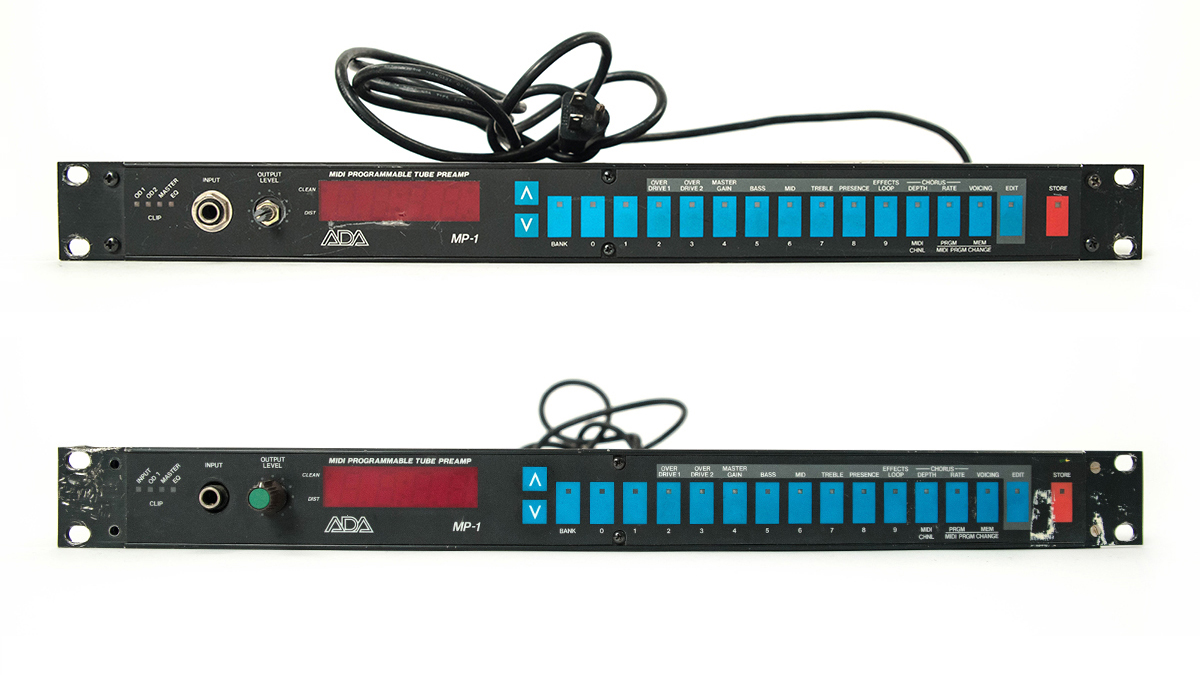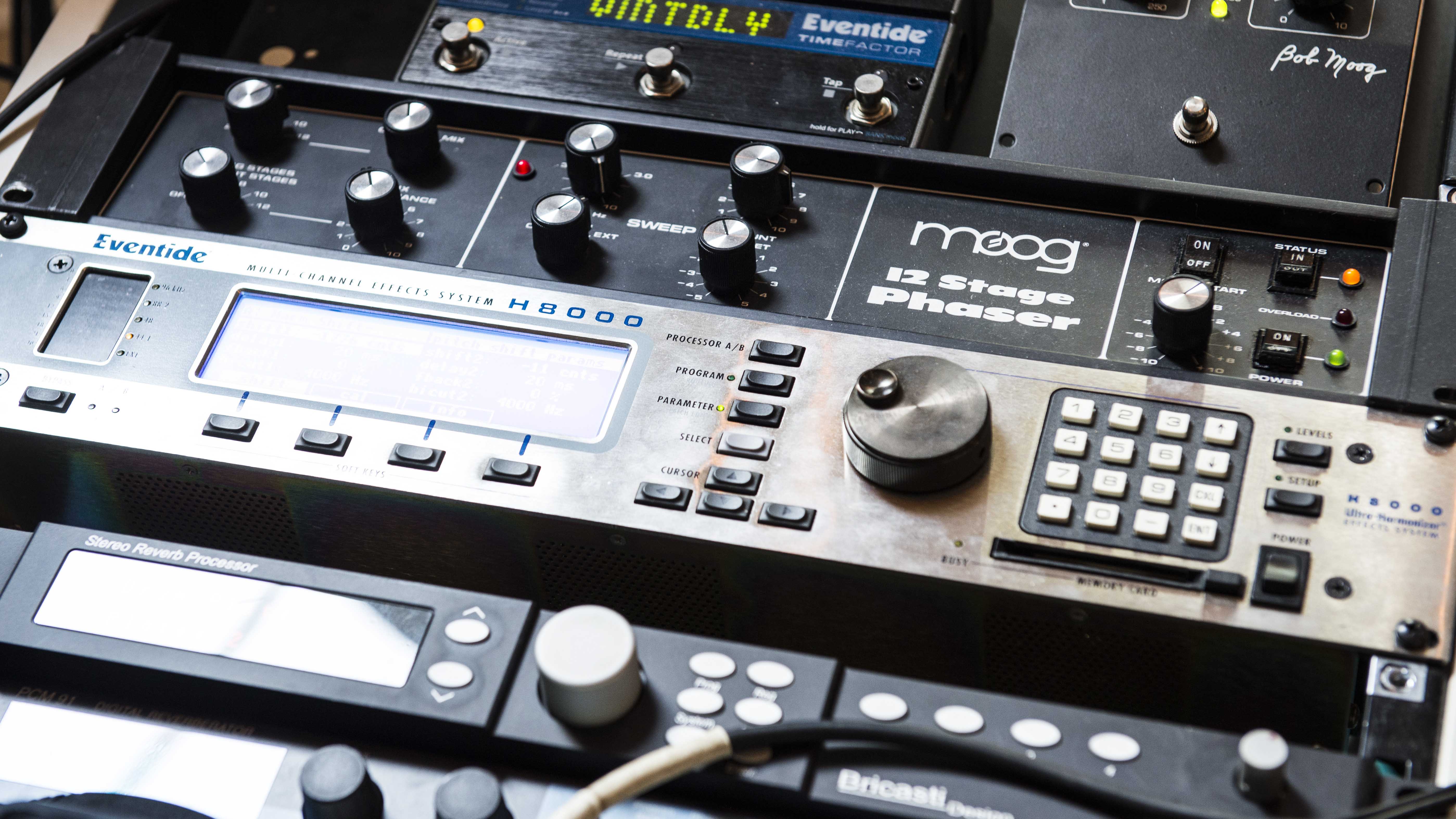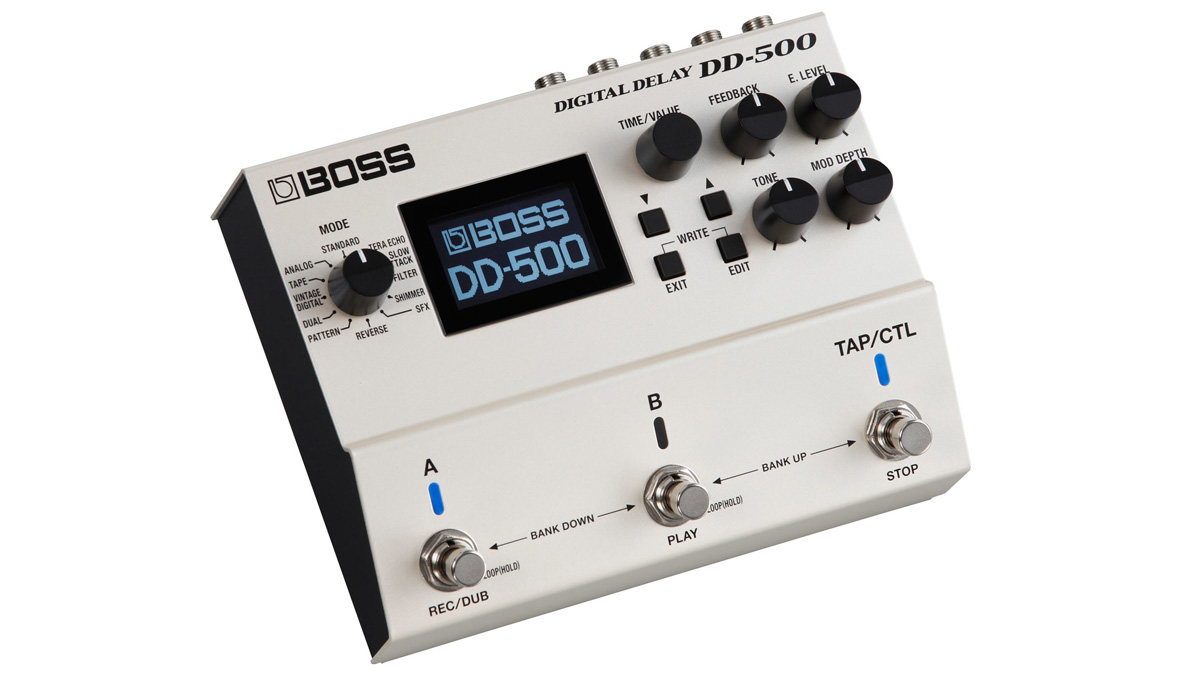9 rack effect bargains guitarists need to check out
The best processors at affordable prices

Once all the rage, rack equipment has largely gone out of fashion for casual musicians and smaller bands, with the only notable exceptions being popular rack-mounted amp modellers such as the Axe-Fx and Kemper units.
As a result, particularly on the used market it's possible for the average player to pick up previously high-end gear for use live, or more likely, in a home studio.
So here's a rundown of several units that are worth some attention, and which might trigger some new creative revelation - all at potentially bargain basement prices.
1. Lexicon MPX1

With few celebrity endorsements and without being the flagship of its generation, the relatively recent MPX1 might seem like a strange recommendation, but bear with us.

Boasting two reverb processors, with a dedicated processor for reverb on every patch, the result is a unit that can do complicated delays, choruses, pitch-shifting, panning and often some combination of the above in addition to the stellar core reverb. Extra functionality like random number seeding into patches allows for complex and subtle reverb and modulation effects.
Although there's perhaps no single 'wow' moment to be had, the unit is a studio workhorse, and works brilliantly for stereo delay and reverb on vocals, synths and guitar. By digging deeper through the menus, there are also very few wacky delay-based effects that can't be conjured into existence.
2. Alesis Midiverb II

There are a number of entries in the famous Midiverb series, but only one was used in anger by Kevin Shields on My Bloody Valentine's seminal LP Loveless. Although it has few editable parameters by comparison to other units, and little fuss on the front panel, the reverse reverb setting remains just as potent today as it was back in the heyday of dream-pop, and the bloom patch is also a lot of fun.
Want all the hottest music and gear news, reviews, deals, features and more, direct to your inbox? Sign up here.
Other units in the series also crop up on groundbreaking shoegaze albums, with the Quadraverb+ being singled out by Verve guitarist Nick McCabe as one of his favourite pieces of gear used on their sprawling first album A Storm In Heaven; it can also be had for a song.
3. Line 6 POD

Surely we can't be serious? Well, like many things, perhaps the Line 6 Pod is due something of a reappraisal. Particularly in rack form, and especially for studio use, as a way of combining modelled guitars and a plethora of effects, the Pod is still a surprisingly strong contender, especially given how cheap it can be picked up.
Want to try a wet-dry setup without running a second amp? The Pod's clean tones are likely to stack and blend more than adequately for cases such as this. Guitarist Jade Puget from arena punk-rockers AFI still runs one in his live rig for his clean sounds, so you'd be in good company.
4. Boss SX-700

Possibly the strangest of the lot, this unit's unique selling point was RSS technology, or 'Roland Sound Space'. If you're curious as to the details, then there's an appropriately dated Tomorrow's World segment on the subject on YouTube, complete with sound demos. The crux of it is this: RSS aims to create a wider-than-stereo sound using careful use of delay in parts of the stereo image.
The effects are pretty startling in some cases, with multi-tap delays and filters taking you straight into bad trip territory. The reason this technology didn't catch on isn't clear; perhaps it has to do with mix and mastering engineers distrusting the more unsubtle wide stereo effects created. Either way, it has the potential to be the secret weapon of anybody working in the ambient, dream-pop or post-rock genres.
5. A/DA MP-1

A valve preamp with MIDI control, the ADA MP-1 could be found at the heart of many guitarists' rigs in the early ’90s, particularly in high-gain contexts.
With users as diverse as Paul Gilbert, Nuno Bettencourt and Billy Corgan, it's no wonder that the unit has found itself becoming somewhat notorious. The only thing to be cautious of is that they can be unreliable due to age, or in need of repair.
Nevertheless, should you manage to pick up a well-maintained unit, its compressed, powerful distortion is undeniably great.
6. Roland SDE-3000

Though these don't come up as frequently as some of the other units on this page, for an aficionado of early digital delay, the SDE-3000 is a must-have. Used by players like Eddie Van Halen for stereo delays, it's now also modelled faithfully in the Boss DD-500 as a classic of ’80s digital delay.
Besides the sounds, perhaps the coolest feature of this unit is the Back To The Future-style front panel, which would surely bring a smile to the face of even the most jaded guitarist. Via this gloriously retro set of controls, you can set delay and modulation time while pretending you're messing with the time circuits in the DeLorean.
7. Yamaha SPX90

Another favourite of Kevin Shields, this is a somewhat generic digital multi-effect unit that shines when used for its delays, chorus tones and, you guessed it, its reverse reverb function. For chiming, Cure-like sounds, pair this with a Roland Jazz Chorus style amp for hours of fun.
8. Ibanez AD202

One of the pricier units on this list, the AD202 sometimes comes up with cosmetic blemishes on the used market, and that's an ideal time to snap one up.
Armed with 3 bucket-brigade delay chips, it's a gorgeously warm analogue delay unit that can also be switched into a lush chorus mode. Crucially, it also looks like a Bond-villian superweapon control panel, which is ideally what you want from a rack setup.
9. Roland DC-10

The final entry on this list is cheating a bit. It's not actually a 1U rack unit, although it could be racked if needs be. This desktop analogue delay unit is perennially cheap, and if you're looking to run synths as well as guitars, could prove a decent home studio alternative to an analogue delay pedal.
Lexicon MPX1 vs Boss DD-500

The MPX1 is one of the newer units on the list, and its processing power has only recently been matched in foot-pedal format. On a good day, a used unit could be less than half of the price of the Boss DD-500 delay new. So how does it stack up against the flagship Boss delay? Here are some key takeaways.
As you might expect, the DD-500 is easier to use live; it's also easier to create new patches for and tweak things like delay time via tap. However, toggling tempo on the MPX1 is more precise via the front-panel, and especially if you're working with polyrhythms, feels easier to work with.

In terms of supporting the user, the Boss PC editor makes complex patches a breeze, but if you're patient, there are more possibilities with the MPX1 menu system. Not only that, but the standalone pitch algorithms, panning and random seeding are algorithms that aren’t accessible on the DD-500 without excessive workarounds.
MPX-1 killer feature: dedicated reverb processor for every patch; the DD-500 has some reverb-like delays, but not up to the standard of the MPX1, or indeed, the Boss RV-500.
DD-500 killer feature: A/B stereo delays. Being able to separate two delay patches out into the left and right channel for parallel delay effects is a pretty unique and powerful feature, not to mention intuitive to set up and work with.
Alex Lynham is a gear obsessive who's been collecting and building modern and vintage equipment since he got his first Saturday job. Besides reviewing countless pedals for Total Guitar, he's written guides on how to build your first pedal, how to build a tube amp from a kit, and briefly went viral when he released a glitch delay pedal, the Atom Smasher.
